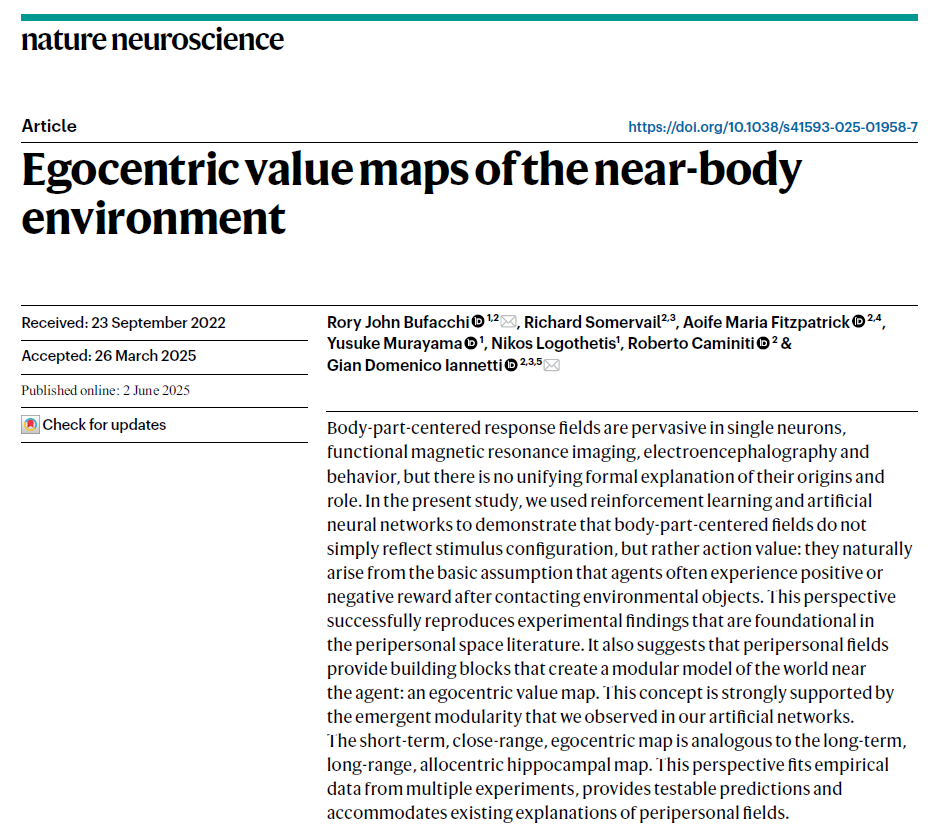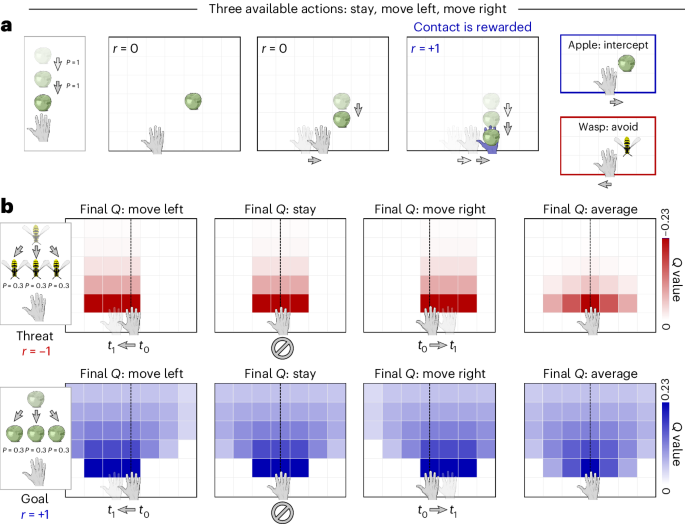On June 2nd, Nature Neuroscience, published the article titled "Egocentric value maps of the near body environment". This work was carried out by Rory Bufacchi, Yusuke Murayama, and Nikos Logothetis from the International Center for Primate Brain Research / CEBSIT (CAS), in collaboration with Richard Somervail, Aoife Fitzpatrick, Roberto Caminiti and Giandomenico Iannetti from UCL, Dublin City University, and the Italian Institute of technology.

This computational work concerns neurons responsive to objects near the body—so-called peripersonal neurons. They were discovered decades ago and initially viewed as simple proximity detectors, but pure proximity-based theories have since failed to explain more nuanced properties of these neurons, such as their modulation by stimulus valence, speed, and motor repertoire. To address these issues, the paper puts forward a quantitative framework that explains the complex characteristics of peripersonal neurons, clarifiying why they exist and how they function, while also providing a link to broader theories of systems neuroscience. Specifically, the authors used reinforcement learning and artificial neural networks to demonstrate that bodypart-centred fields do not simply reflect stimulus configuration but action value: they naturally arise from the basic assumption that agents often experience positive or negative reward after contacting environmental objects. This perspective reproduces experimental findings foundational in the peripersonal space literature. It also suggests that peripersonal fields provide building blocks that create a modular model of the world near the agent: an egocentric value map. This concept is strongly supported by the emergent modularity observed in the tested artificial networks. In short, this perspective fits empirical data from multiple experiments, provides testable predictions, and accommodates existing explanations of peripersonal neurons.

a, When objects offer rewards upon contact, agents maximize value by moving toward positive-reward objects (apple) and away from negative-reward objects (wasp). b, Motor repertoire shapes body-part-centered fields. Columns show Q values for different actions. For negative-reward stimuli, more available actions result in smaller fields, as agents can avoid threats more effectively. For positive-reward stimuli, more available actions expand fields, as agents can reach rewards more easily. This explains why biological peripersonal fields adapt according to action possibilities.
This article published in Nature Neuroscience was funded the by the Shanghai Municipal Science and Technology Major Project, Shanghai Municipal Human Resources and Social Security Bureau, and by the European Research Council
Article: Bufacchi R.j., Somervail R., Fitzpatrick A.M., Murayama Y., Logothetis N., Caminiti R., Iannetti G.D. Nat. Neurosci. (2025)
DOI: 10.1038/s41593-025-01958-7
Link: https://doi.org/10.1038/s41593-025-01958-7
Author contact: Rory bufacchi, International Center for Primate Brain Research / CEBSIT (CAS), Shanghai, China
Email: rory.bufacchi@@icpbr.ac.cn, rory.bufacchi@@gmail.com